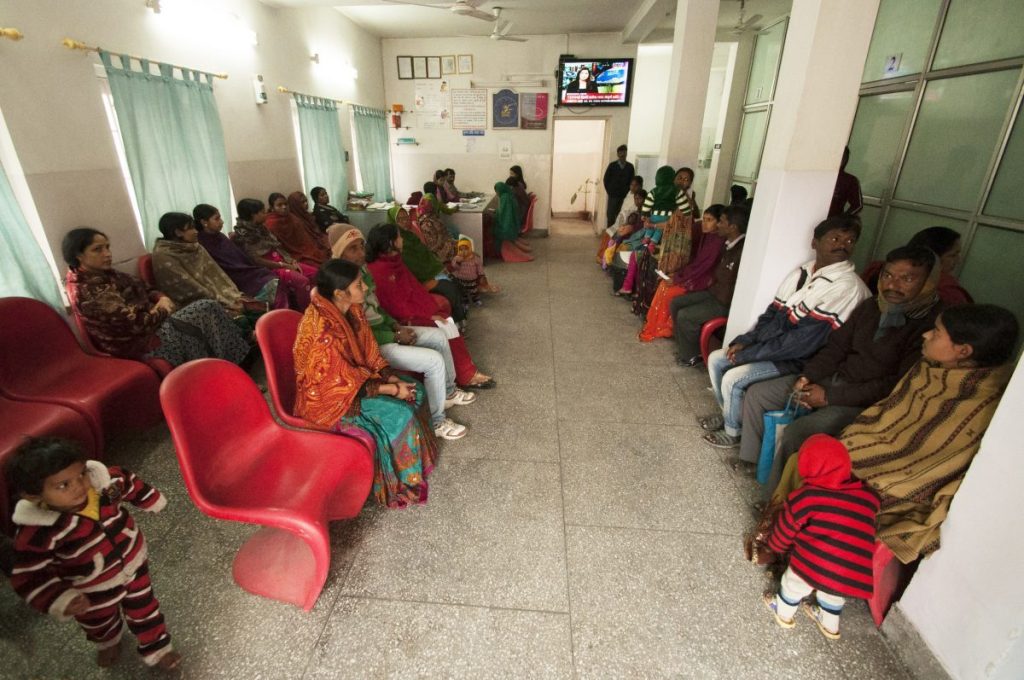Despite the health sector employing five million workers in India it continues to have low density of health professionals with figures for the country being lower than those of Sri Lanka, China, Thailand, the United Kingdom and Brazil, according to a World Health Organisation database.

The skilled health workforce in India does not meet the minimum threshold of 22.8 skilled workers per 10,000 population recommended by the World Health Organisation, shows research published in the online journal BMJ Open.
The actual size of the health workforce in India is lower than the number of medical professionals registered with various councils and associations in the country. The research paper published in The BMJ Open by Dr Anup Karan, Additional Professor, Indian Institute of Public Health Delhi, (IIPHD) and his team came to this conclusion after comparing data from the National Sample Survey (NSS) and a review of published documents by the Central Bureau of Health Intelligence.
Despite the health sector employing five million workers in India it continues to have low density of health professionals with figures for the country being lower than those of Sri Lanka, China, Thailand, United Kingdom and Brazil, according to a World Health Organisation database. This workforce statistic has put the country into the “critical shortage of healthcare providers” category.
Bihar, Jharkhand, Uttar Pradesh and Rajasthan are the worst hit while Delhi, Kerala, Punjab and Gujarat compare favourably.
“Southeast Asia needs a 50% increase in healthcare manpower to achieve universal health coverage by 2030. India faces the problem of acute shortages and inequitable distributions of skilled health workers as have many other low- and middle-income countries,’’ said K. Srinath Reddy, president, Public Health Foundation of India.
Estimates of non-health workers engaged in the health sector and technically qualified health professionals who are not part of the current workforce is able to be provided in India for the first time by the study as it is based on data from two sources.
The authors retrieved data on the number of registered practitioners, such as doctors, nurses, physiotherapists and dentists, from published literature and websites of professional councils and organisations.
They also estimated the number of qualified and unqualified healthcare workers actually working in India using the 68th round (July 2011-June 2012) of National Sample Survey Organisation (NSSO) data on ‘Employment and Unemployment Situation in India’ – a household survey conducted every five years.
As well as registered practitioners, the health workforce in India includes many informal medical practitioners, such as traditional birth attendants, faith healers, snakebite curers, and bonesetters without formal education or training.
The total size of health workforce registered with different councils and associations was 5 million, but the NSSO estimated the size of the workforce to be 1.2 million fewer at 3.8 million.
Based on the registration data, the density of the total health workforce was estimated to be 38 per 10,000 population, but the NSSO data found it be lower at 29 per 10,000 population. In eastern and rural states total health workforce density was lower than the WHO minimum threshold of 22.8 per 10,000 population.
According to the registry data the density of doctors and nurses and midwives per 10,000 population across India was 26.7, whereas the NSS0 data put it at 20.6.
The estimates also reveal “an alarmingly large presence of unqualified health professionals,” as adjusting for adequate qualifications of health workers reduced the workforce density from 29 to 16 health workers per 10,000 population.
The presence of unqualified health professionals in the health system is not unique in India.
Unqualified health professionals are usually the first point of contact for rural and poor population in many low-income and middle-income countries.
Government medical colleges in the country produce 50 per cent of all doctors in India every year, but nearly 80 per cent of them work in the private sector.
The data also showed that approximately 25% of currently working health professionals do not have the required qualifications as laid down by professional councils, and that 20% of adequately qualified doctors are not in the current workforce. More than 80% of doctors and 70% of nurses and midwives were employed in the private sector.
Despite 71 per cent of the country being predominantly rural, the proportion of doctors and nurses in rural areas are 34 per cent and 33 per cent, respectively, it showed.
The density of health workers, including allopath and AYUSH doctors, nurses and midwives, in India is 20.6 per 10,000 population. Most central and eastern Indian states have a low density of health workers, ranging from approximately 23 per 10,000 population in Bihar and Northeastern states other than Assam, to as low as 7 per 10,000 population in Jharkhand.
The only South Indian state reflecting lower density than the all-India average is Andhra Pradesh (25), and the only eastern state having a higher density than the all-India average is West Bengal (36).
The highest concentration of health workers is in Delhi (67), followed by Kerala (66) and Punjab (52.)
Delhi has the highest density of doctors (34), but the density of nurse and midwife is the highest (38) in Kerala.
The researchers point to several limitations of their study, including the registration data being inadequately updated and likely to include deceased, unemployed and professionals who have migrated overseas, and the survey data being self- and also outdated reported.
Nevertheless the authors were able to conclude: “Distribution and qualification of health professionals are serious problems in India when compared with the overall size of health workers. The policy should focus on enhancing the quality of health workers and mainstreaming professionally qualified persons into the health workforce.”
The health workforce in India comprises broadly eight categories, namely: doctors (allopathic, alternative medicine); nursing and midwifery professionals; public health professionals (medical, non-medical); pharmacists; dentists; paramedical workers (allied health professionals); grass-root workers (frontline workers); and support staff.